1. Pan J, Jia W. Early-onset diabetes: an epidemic in China. Front Med. 2018; 12(6):624–633. PMID:
30393830.

2. Wilmot EG, Davies MJ, Yates T, Benhalima K, Lawrence IG, Khunti K. Type 2 diabetes in younger adults: the emerging UK epidemic. Postgrad Med J. 2010; 86(1022):711–718. PMID:
20966485.

3. Hillier TA, Pedula KL. Complications in young adults with early-onset type 2 diabetes: losing the relative protection of youth. Diabetes Care. 2003; 26(11):2999–3005. PMID:
14578230.

4. Lascar N, Brown J, Pattison H, Barnett AH, Bailey CJ, Bellary S. Type 2 diabetes in adolescents and young adults. Lancet Diabetes Endocrinol. 2018; 6(1):69–80. PMID:
28847479.

5. Kim KS, Oh HJ, Kim JW, Lee YK, Kim SK, Park SW, et al. The clinical characteristics of the newly diagnosed early onset (< 40 years old) diabetes in outpatients' clinic. Korean Diabetes J. 2010; 34(2):119–125. PMID:
20548844.

6. Lee BW, Kim SY, Kim JY, Cho KY, Chung YJ, Min YK, et al. Heterogeneity of early-onset and ketosis-resistant diabetes in Korean subjects--is it possible to determine cut-off age of early-onset type 2 diabetes? Diabetes Res Clin Pract. 2005; 70(1):38–45. PMID:
16126122.

7. Noh JW, Jung JH, Park JE, Lee JH, Sim KH, Park J, et al. The relationship between age of onset and risk factors including family history and life style in Korean population with type 2 diabetes mellitus. J Phys Ther Sci. 2018; 30(2):201–206. PMID:
29545678.

8. Seo DH, Kang S, Lee YH, Ha JY, Park JS, Lee BW, et al. Current management of type 2 diabetes mellitus in primary care clinics in Korea. Endocrinol Metab (Seoul). 2019; 34(3):282–290. PMID:
31565881.

9. Ogata H, Kayaba M, Tanaka Y, Yajima K, Iwayama K, Ando A, et al. Effect of skipping breakfast for 6 days on energy metabolism and diurnal rhythm of blood glucose in young healthy Japanese males. Am J Clin Nutr. 2019; 110(1):41–52. PMID:
31095288.

10. Rong S, Snetselaar LG, Xu G, Sun Y, Liu B, Wallace RB, et al. Association of skipping breakfast with cardiovascular and all-cause mortality. J Am Coll Cardiol. 2019; 73(16):2025–2032. PMID:
31023424.

11. Jakubowicz D, Wainstein J, Ahren B, Landau Z, Bar-Dayan Y, Froy O. Fasting until noon triggers increased postprandial hyperglycemia and impaired insulin response after lunch and dinner in individuals with type 2 diabetes: a randomized clinical trial. Diabetes Care. 2015; 38(10):1820–1826. PMID:
26220945.

12. Kim YJ, Yoon JH, Choi HS, Kim CS, Bae EH, Ma SK, et al. Meal frequency and skipping breakfast are associated with chronic kidney disease. Nutrients. 2020; 12(2):E331. PMID:
32012653.

13. Hessler DM, Fisher L, Mullan JT, Glasgow RE, Masharani U. Patient age: a neglected factor when considering disease management in adults with type 2 diabetes. Patient Educ Couns. 2011; 85(2):154–159. PMID:
21112720.

14. Rothman RL, Mulvaney S, Elasy TA, VanderWoude A, Gebretsadik T, Shintani A, et al. Self-management behaviors, racial disparities, and glycemic control among adolescents with type 2 diabetes. Pediatrics. 2008; 121(4):e912–9. PMID:
18381520.

15. de Lusignan S, Khunti K, Belsey J, Hattersley A, van Vlymen J, Gallagher H, et al. A method of identifying and correcting miscoding, misclassification and misdiagnosis in diabetes: a pilot and validation study of routinely collected data. Diabet Med. 2010; 27(2):203–209. PMID:
20546265.

16. Arnqvist HJ, Littorin B, Nyström L, Scherstén B, Ostman J, Blohmé G, et al. Difficulties in classifying diabetes at presentation in the young adult. Diabet Med. 1993; 10(7):606–613. PMID:
8403820.

17. Ahn CW, Kim HS, Nam JH, Song YD, Lim SK, Kim KR, et al. Clinical characteristics, GAD antibody (GADA) and change of C-peptide in Korean young age of onset diabetic patients. Diabet Med. 2002; 19(3):227–233. PMID:
11918625.

18. Gong Y, Che TT, Liu SF, Ren Y. Characteristics of newly diagnosed diabetes patients with young onset in the West China Hospital of Sichuan University. Sichuan Da Xue Xue Bao Yi Xue Ban. 2014; 45(3):524–528. PMID:
24941832.
19. Kong X, Xing X, Zhang X, Hong J, Yang W. Early-onset type 2 diabetes is associated with genetic variants of β-cell function in the Chinese Han population. Diabetes Metab Res Rev. 2020; 36(2):e3214. PMID:
31465628.

20. Guo Y, Traurig M, Ma L, Kobes S, Harper I, Infante AM, et al. CHRM3 gene variation is associated with decreased acute insulin secretion and increased risk for early-onset type 2 diabetes in Pima Indians. Diabetes. 2006; 55(12):3625–3629. PMID:
17130513.

21. Burns N, Finucane FM, Hatunic M, Gilman M, Murphy M, Gasparro D, et al. Early-onset type 2 diabetes in obese white subjects is characterised by a marked defect in beta cell insulin secretion, severe insulin resistance and a lack of response to aerobic exercise training. Diabetologia. 2007; 50(7):1500–1508. PMID:
17393133.

22. Magliano DJ, Sacre JW, Harding JL, Gregg EW, Zimmet PZ, Shaw JE. Young-onset type 2 diabetes mellitus - implications for morbidity and mortality. Nat Rev Endocrinol. 2020; 16(6):321–331. PMID:
32203408.

23. Huang JX, Liao YF, Li YM. Clinical features and microvascular complications risk factors of early-onset type 2 diabetes mellitus. Curr Med Sci. 2019; 39(5):754–758. PMID:
31612393.

24. Huo X, Gao L, Guo L, Xu W, Wang W, Zhi X, et al. Risk of non-fatal cardiovascular diseases in early-onset versus late-onset type 2 diabetes in China: a cross-sectional study. Lancet Diabetes Endocrinol. 2016; 4(2):115–124. PMID:
26704379.

25. Pavkov ME, Bennett PH, Knowler WC, Krakoff J, Sievers ML, Nelson RG. Effect of youth-onset type 2 diabetes mellitus on incidence of end-stage renal disease and mortality in young and middle-aged Pima Indians. JAMA. 2006; 296(4):421–426. PMID:
16868300.

26. Constantino MI, Molyneaux L, Limacher-Gisler F, Al-Saeed A, Luo C, Wu T, et al. Long-term complications and mortality in young-onset diabetes: type 2 diabetes is more hazardous and lethal than type 1 diabetes. Diabetes Care. 2013; 36(12):3863–3869. PMID:
23846814.

27. Al-Saeed AH, Constantino MI, Molyneaux L, D'Souza M, Limacher-Gisler F, Luo C, et al. An inverse relationship between age of type 2 diabetes onset and complication risk and mortality: the impact of youth-onset type 2 diabetes. Diabetes Care. 2016; 39(5):823–829. PMID:
27006511.

28. Song SH. Significant retinopathy in young-onset type 2 vs. type 1 diabetes: a clinical observation. Int J Clin Pract. 2016; 70(10):853–860. PMID:
27028787.

29. Volaco A, Cavalcanti AM, Filho RP, Précoma DB. Socioeconomic status: the missing link between obesity and diabetes mellitus? Curr Diabetes Rev. 2018; 14(4):321–326. PMID:
28637406.

30. Funakoshi M, Azami Y, Matsumoto H, Ikota A, Ito K, Okimoto H, et al. Socioeconomic status and type 2 diabetes complications among young adult patients in Japan. PLoS One. 2017; 12(4):e0176087. PMID:
28437472.

31. Wolf G, Busch M, Müller N, Müller UA. Association between socioeconomic status and renal function in a population of German patients with diabetic nephropathy treated at a tertiary centre. Nephrol Dial Transplant. 2011; 26(12):4017–4023. PMID:
21493815.

32. Roy T, Lloyd CE. Epidemiology of depression and diabetes: a systematic review. J Affect Disord. 2012; 142(Suppl):S8–S21. PMID:
23062861.

33. Fiore V, Marci M, Poggi A, Giagulli VA, Licchelli B, Iacoviello M, et al. The association between diabetes and depression: a very disabling condition. Endocrine. 2015; 48(1):14–24. PMID:
24927794.

34. Park M, Reynolds CF 3rd. Depression among older adults with diabetes mellitus. Clin Geriatr Med. 2015; 31(1):117–137. PMID:
25453305.

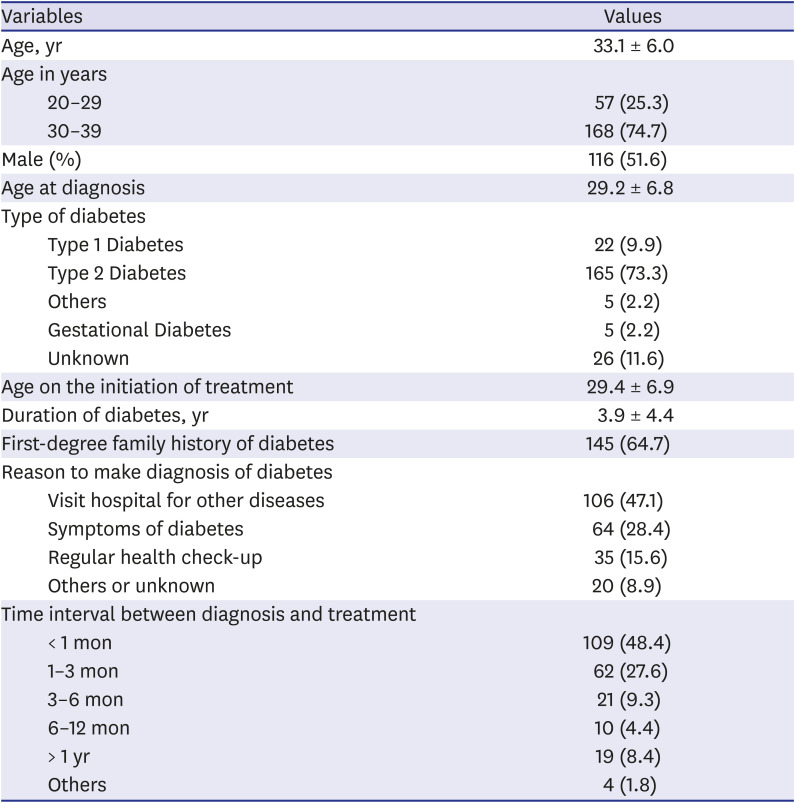
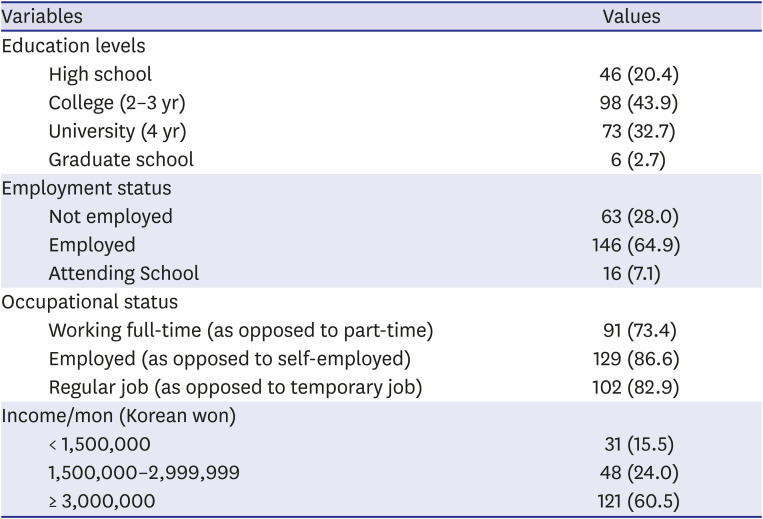
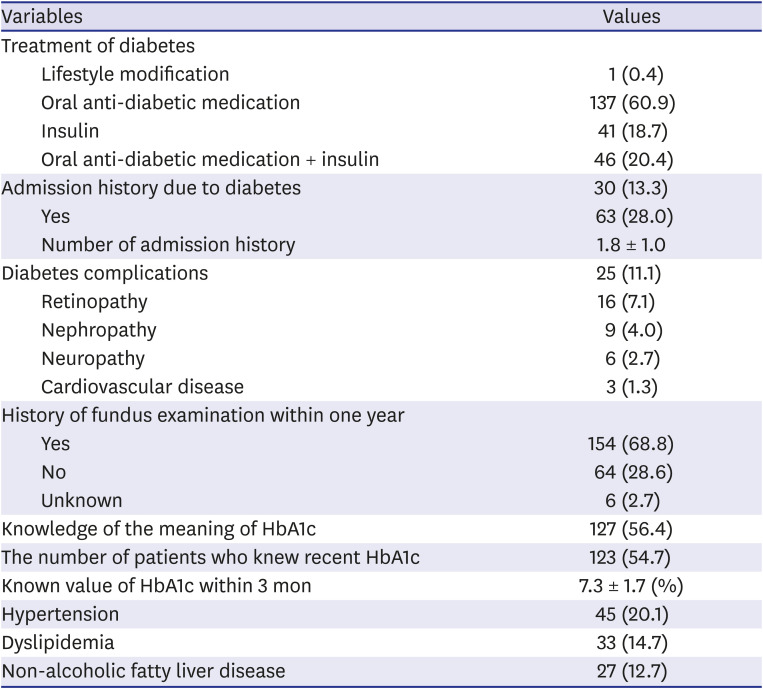
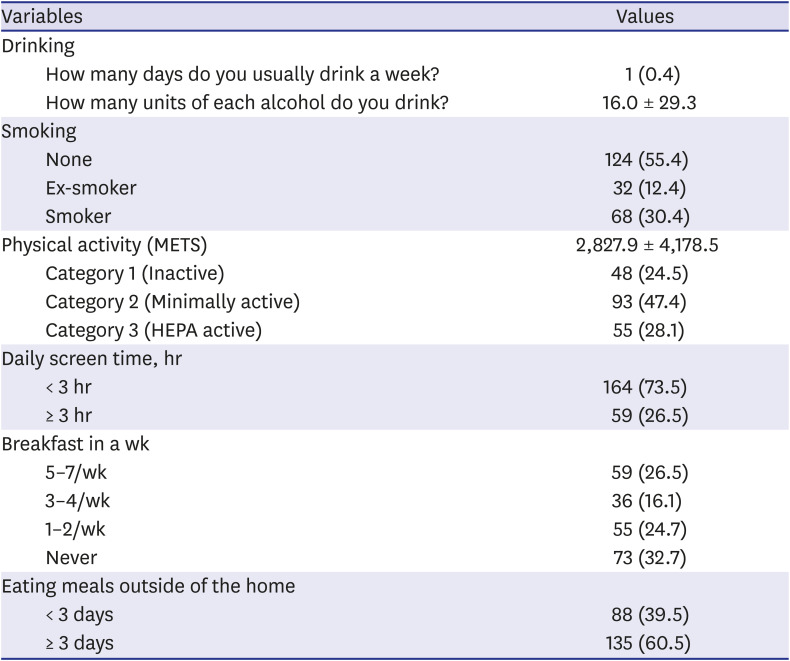
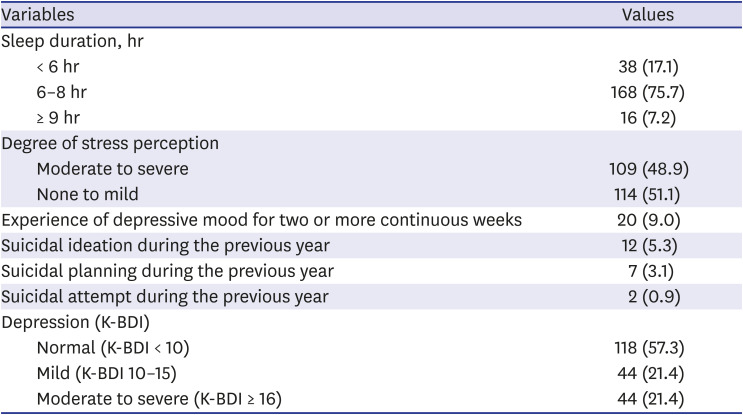




 PDF
PDF Citation
Citation Print
Print



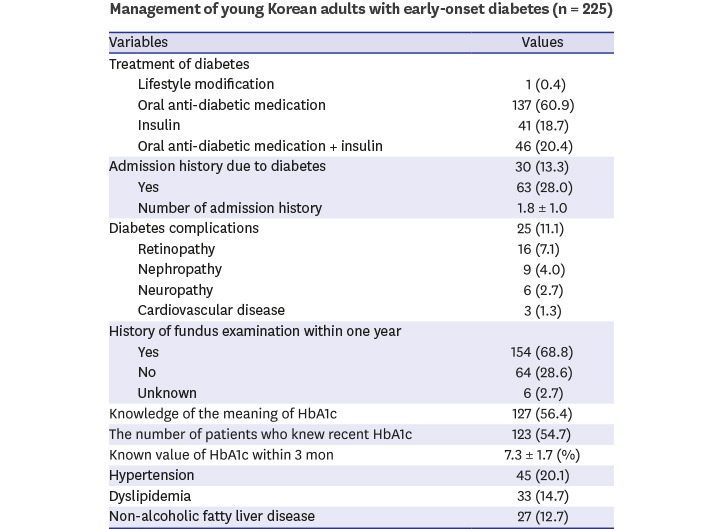
 XML Download
XML Download